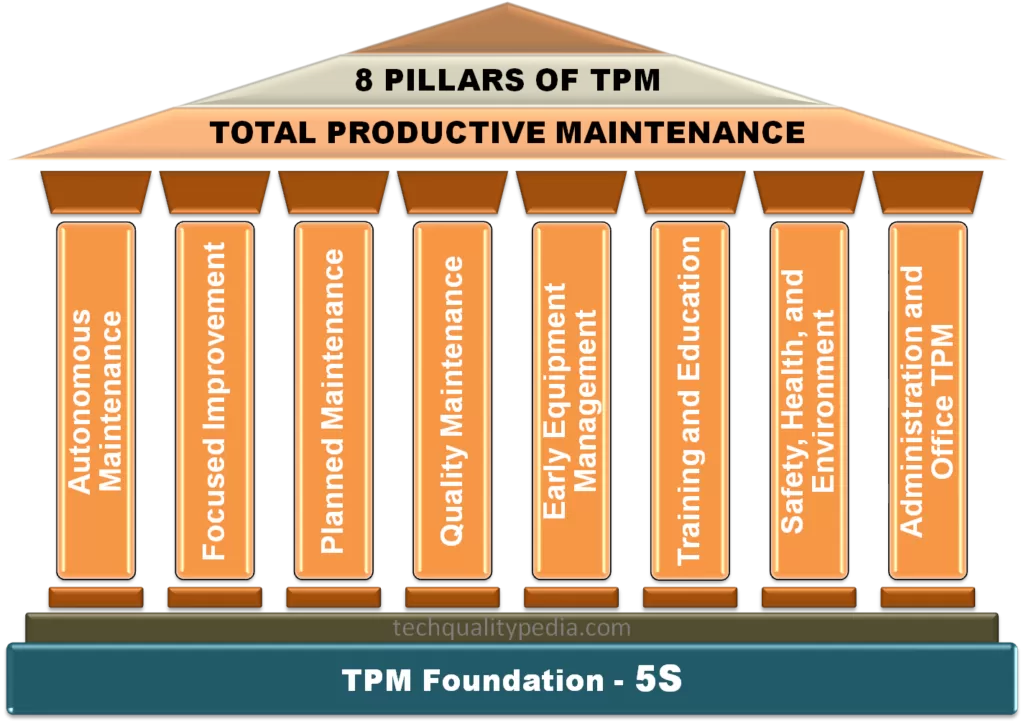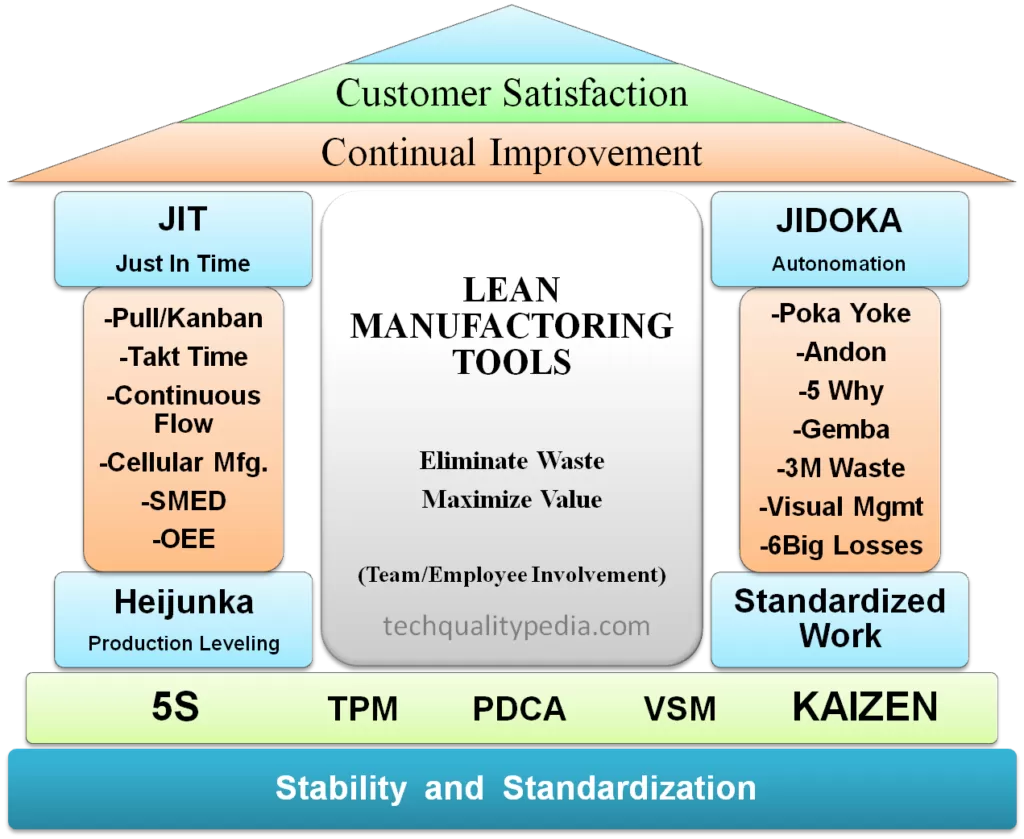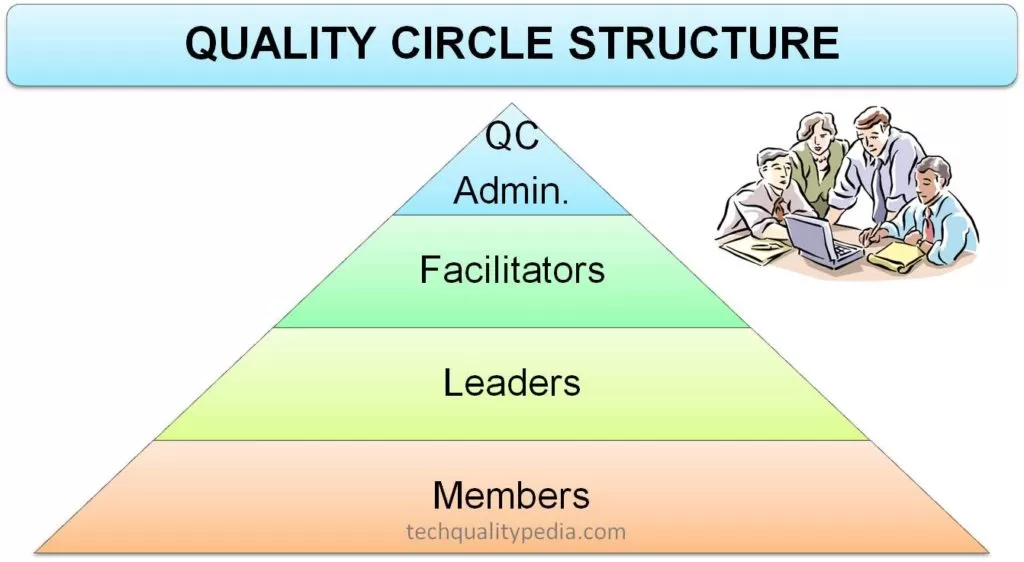TPM stands for Total Productive Maintenance. TPM was developed around the 1960s and it consists of eight supporting activities or 8 pillars.
The 5S methodology is the foundation stone of the TPM implementation program. TPM strives for effective and efficient production. That is;
- No or Fewer Breakdowns
- No Small Stops or Slow Running
- No Accidents-provide a safer workplace
- No Defects
Table of Contents
TPM Meaning
TPM aiming for “ZERO MACHINE TROUBLE” or “ZERO BREAKDOWN”
TPM is a method for continuously improving the effectiveness of the production equipment or manufacturing processes through the people’s involvement within the organization.
TPM Pillars
The 8 pillars of TPM are as follow:
- Autonomous Maintenance (JISHU HOZEN)
- Focused Improvement
- Planned Maintenance
- Quality Maintenance
- Early Equipment Management
- Training and Education
- Safety, Health, and Environment
- Administration and Office TPM

Autonomous Maintenance (JISHU HOZEN)
In autonomous maintenance activity, the operator performs daily CLIT activities- such as cleaning, lubrication, inspection, and tightening of the machine.
Autonomous Maintenance Benefits:
- Identifies the problem before they become equipment failures/breakdown.
- Provide operators with greater responsibility and ownership of their equipment.
- Enhance operator’s skill/knowledge about their equipment.
- Ensures that equipment is well maintained, cleaned and lubricated.
- Reduce unplanned machine breakdowns/failures.
- Reduce the high-level-tasks performance by maintenance personnel.
- Increase the equipment life and performance.
Focused Improvement
In this, small groups of operators and technical services work together proactively in order to focus on specific losses in equipment operation and countermeasure implementation to reduce or eliminate losses.
Focuses Improvement Benefits:
- Ensure adequate methods for identification of losses and increase productivity.
- Repeated and major problem are identified and rectified.
- Continuous improvement by people involvement and talent utilization.
- Ease of detecting and correcting deterioration of tool/equipment.
Planned Maintenance
PM is the scheduled maintenance activities carried out by maintenance persons to eliminate losses and increase OEE.
The PM schedule frequency is set based on predicted or previous breakdown/failure rates.
Planned Maintenance Benefits:
- Reduces unplanned stop time and losses significantly.
- Why-why analysis of failure to prevent recurrence.
- Improves management of wear-prone and failure-prone parts, resulting in lower inventory.
- Allows most maintenance to be scheduled for times when the equipment is not in use.
- Prevention of repeated and major breakdowns.
- Timely replacement of suspected or worn-out parts to avoid unplanned equipment failure.
Quality Maintenance
Incorporate error detection and prevention into your manufacturing processes. Focus on root cause analysis and corrective/preventive measures to eliminate recurrence of quality defects.
Quality Maintenance Benefits:
- Focuses on quality issues with improvement projects aimed at eliminating real root causes of quality defects.
- Reduces quality defects and wastes.
- Deceases cost by early detection of faults/defects as it is expensive to capture defects through inspection at later stage.
Early Equipment Management
TPM-acquired practical knowledge and understanding of industrial equipment used to improve the design of new machinery.
Benefits:
- Maintenance is simpler and more robust due to practical evaluation and employee involvement prior to installation.
- New equipment achieves targeted performance levels considerably faster due to fewer start-up issues.
Education and Training
The aim of this pillar is to raise the technical knowledge/skill level of operators, maintenance men, and managers to achieve TPM goals.
Benefits:
- Operators learn abilities to consistently maintain equipment and recognize growing problems.
- Maintenance employees learn proactive and preventative maintenance techniques/procedures.
- Managers are trained on TPM concepts, employee coaching, and development.
Health, Safety, and Environment
The purpose of this pillar is to make the workplace or environment safe and healthy for all employees.
Benefits:
- Provides an accident free workplace.
- Eliminates potential health and safety concerns, resulting in a safer workplace.
TPM in Office or Administration
TPM in office basically addresses the wasteful activities in administration functions.
Benefits:
TPM supports the manufacturing process through improved administrative functions like fast order processing, procurement, scheduling, etc.
You’ll also like:




